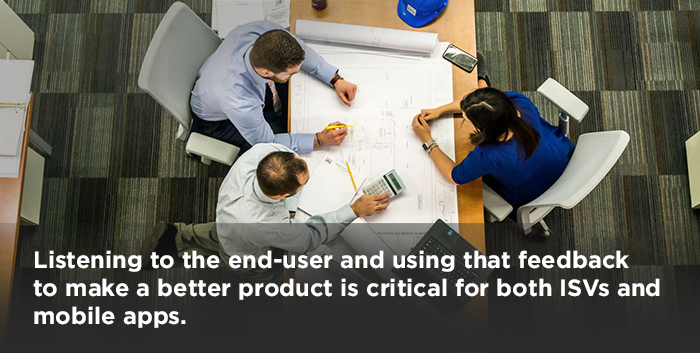Unless you have been living in a cave for the last 5 years, it will come as no surprise that the smartphone industry has taken over the planet. In fact, it is estimated that the number of smartphone users globally will reach 1.9 billion this year. Of course, the cornerstones of the smartphone are the mobile applications that go with them. Apple and Google are leading the way with over 2.2 million available apps on both iOS and Android technology. And quite frankly, that’s a lot of apps!
It seems like there’s an app for everything these days. An app to track how much you exercise, or what you eat; an app to book your next vacation, buy a pair of shoes, and listen to music; or my personal favorite, the “hiking map app.” (Not to mention, the standard must have’s including Facebook, YouTube, Dropbox or Skype.) And of course, let’s not forget the games! Some of the most popular downloads of apps are games (Minecraft, Candy Crush and Grand Theft Auto have each been downloaded by over 500 million people across the globe). It seems that we just can’t live without them.
Apps are becoming so prevalent that the lines between their businesses and those of traditional ISVs are becoming blurred; this is especially the case as we see more and more traditional ISVs developing mobile apps of their own. In addition, there is also some confusion about what an “app” really is as nearly any software application these days seems to be deemed an “app.” This inter-changeability of the term “app” and “software application” blurs the lines even further.
In the B2B space, apps now cover a wide range of business needs, as users require solutions that are utterly mobile. Plus, many mobile application development companies consider themselves as start-up ISVs and hope to grow their businesses into well-established software vendors with a variety of solutions to offer in their product portfolios down the road.
On the flip side, traditional ISVs are facing a number of challenges as they enter the cloud, as many are not native cloud-based solution providers. These ISVs have to determine whether or not to build a cloud to run their production software; the alternative is to host SaaS solutions in a public cloud or a hosted one.
As Cisco blogger Parag Parekh says:
“Business users and consumers alike have shown a strong preference for easy access, low pricing, and simple updates enabled by the Software-as-a-Service (SaaS) model. But whether they have built their software on a cloud platform or are migrating from a traditional licensed model, ISVs have reason to be wary. In the cloud, they are not delivering a product, but a service. Their ability to build and deliver their SaaS applications securely and cost-effectively, while meeting customers’ high expectations for availability, performance, and price, depends largely on the cloud vendor and infrastructure service they choose.”
Apps, on the other hand, are aware of this because it is the foundation upon which their business models lay. Of course they are also facing challenges of their own: an overcrowded market, difficulty finding funding, device compatibility, and meeting user expectations. And let’s not forget, 35% of mobile app engagements last less than a minute, which not only means that users don’t take long to determine whether or not they like an app, but that generally a large percentage of apps fail. As a result, it’s increasingly difficult to develop and release a mobile app for any platform that performs exceptionally well in today’s market.
But the pressure on traditional ISVs to continuously add value when competition is only a click away also raises fundamental challenges for their businesses as well. Small, agile ISVs can pivot quickly to adapt to changes in market trends, but that doesn’t always lend itself to the time needed to develop efficient internal processes and procedures (which is a requirement for longer-term growth). Large, established ISVs have the advantage of being able to rely on their existing customers and robust operations, but it’s not easy for them to implement change fast enough. This juxtaposition between agility to meet market demand and the required efficiency to run a business is at the core of many ISV challenges.
So, again, the lines between apps and ISVs are blurred. Here are some other ways that apps are like ISVs, and ISVs are like apps:
Apps are innovators
ISVs are the trendsetters of our time. Without them, we’d all still be sitting at desks with rotary-dial phones and paper notepads as our main work tools. But mobile apps are pushing the limits of technology and are responsible for much of the groundbreaking innovation around the development of AR/VR, IoT and location-based services (LBS). Apps have been particularly advanced as they release cutting-edge, state-of-the-art use cases for these types of technologies; remote assistance and ARvertising being two examples. And while Pokémon Go is often cited as an example of how the app revolution is pioneering creative invention, I’m quite sure that the best is yet to come.
ISVs are targeting other ISVs for OEM partnerships (including apps)
As the software application market becomes more saturated, it’s important for ISVs and apps alike to understand how to build partnerships that will help improve their offers and benefit the end-customer. More and more ISVs are pairing up with other ISVs that can embed complementary feature sets into the software product or app itself; not only does this help save considerable time and resources rather than developing those same features in-house, but it provides a direct access to a specific expertise that they wouldn’t necessarily have otherwise. These win-win partnerships help make the offer more attractive for the end-user and ultimately will enable to ISVs and mobile application developers to grow their businesses. Of course, having a robust ISV-OEM strategy is key in order for this type of relationship-building to work.
ISVs and apps use the same marketing tactics
Agile development and growth hacking are inherent for marketing apps. ISVs are no stranger to the lean start-up model and using feedback from beta testing in order to hone-in on what their customers want. Listening to the end-user and using that feedback to make a better product is critical for both ISVs and mobile apps. Without it, both would develop products that are just thrown in the bin. In addition, building the ability to easily share information about the product on social media platforms as an inherent part of the program itself is just one of the marketing tactics that ISVs and mobile apps have in common. This has helped make some of the biggest global brands we all know today.
Conclusion
Traditional ISVs and mobile apps are both facing challenges on a market that is inherently a “survival of the fittest” environment. Those that are able to adapt to change in order to meet the growing demands of their end-user customers will certainly win out in the end.
Sources:
www.linkedin.com/pulse/isv-how-stand-out-crowded-cloud-market-margie-gradwohl/
www.entrepreneur.com/article/277571
www.comakeit.com/blog/isvs-must-make-the-leap-from-software-products-to-digital-platforms/
www.statista.com/topics/840/smartphones/
www.business2community.com/mobile-apps/2017-mobile-app-market-statistics-trends-analysis-01750346
en.wikipedia.org/wiki/List_of_most_downloaded_Google_Play_applications
blogs.cisco.com/datacenter/top-10-isv-challenges-with-cloud-analytics-mobile-and-social-transformation
www.parallels.com/blogs/ras/isv-saas/










